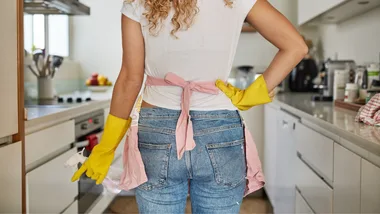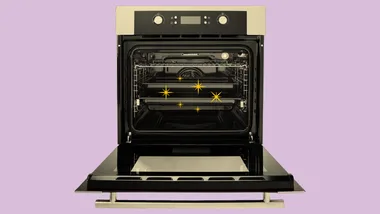When you’re fiending for a cup of tea or coffee – you’re probably not thinking about cleaning your kettle or coffee machine. But did you know that appliances that hold water can produce limescale?
We don’t want to be the ones to break this bad news, but yes, you do need to descale your water appliances every six to eight weeks. Thankfully, it’s not as tedious a chore as cleaning your oven.
What is the cause of limescale?
Limescale is essentially a build up of minerals like calcium carbonate and magnesium which are left behind when hard water evaporates. Hard water is water with a high mineral content whereas soft water has a lower concentrate in minerals. Though New South Wales, Victoria and Tasmania have ‘soft’ water, Western Australia, South Australia, parts of Queensland and the Northern Territory have hard water.
This means that if your water supply is hard water, limescale can appear in your kettles, coffee machines, taps, water pipes and hot water tanks.
You can identify limescale by its characteristic chalky and powdery consistency. It’s usually a white, or off-white colour, too. It’ll also have a coarse and gritty texture to it.

Is limescale in water harmful?
The short answer is no, it’s not dangerous. However, it can make your tea and coffee taste bad – and even a little gritty.
How do I remove limescale?
To get rid of limescale, you’ll need to start descaling your appliances. Whilst you might regularly clean your kettle or coffee machine, cleaning is not the same as descaling. Descaling can actually dissolve mineral build-up whereas cleaning can remove topical dirt and grime.

What is a descaling process?
The process of descaling is not a terribly laborious one. You can either buy a dedicated descaling solution, or you can use vinegar and lemon to descale.
- Kettle: Typically, descaling a kettle should be done before bed so it can be left overnight. Fill the jug halfway and bring it to just before a boil. Then, add vinegar. It’s important that the water is not boiling so that your jug and kitchen don’t stink of vinegar afterwards. Leave the solution overnight and rinse the jug out in the morning.
- Coffee machine: To descale a coffee machine, you should generally check the user manual as every machine is different. Whilst you can also use vinegar, Breville and Nespresso coffee machines have their own solution you can buy to descale.
- Shower heads: Limescale can also be found on shower heads. To descale a shower head, remove it and soak it in a water and vinegar solution overnight. Then rinse it and scrub out any excess limescale from the jet holes.
- Washing machines: In place of your normal detergent, pop a large cup of white vinegar or lemon juice into the wash compartment and run an empty cycle.
- Dishwasher: To descale a washing machine, pop a cup of vinegar into the base of your washing machine and run an empty cycle.
- Toilets: If you have a ceramic toilet that is prone to limescale buildup, about once a month you should descale it. Pop a cup of lemon or vinegar into the toilet bowl and leave for an hour or so. Then, use a toothbrush to clean off the limescale.



